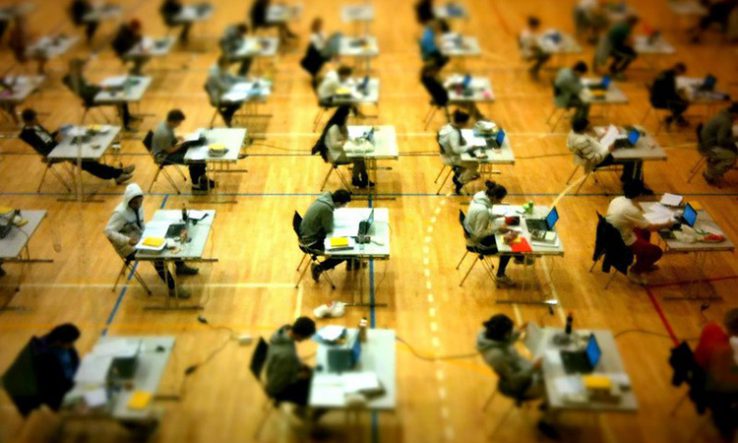
Image: Rune Mathisen [CC BY-SA 2.0] via Flickr
Former Ucas head warns of “unexplained differences” between boys and girls in teacher-assessed grades
Boys may have suffered “systemic bias” against them in the A-level grades awarded during the Covid-19 pandemic, a former Ucas chief executive has said.
In a blogpost published by the Higher Education Policy Institute on 23 August, Mary Curnock Cook said she was “concerned to note differences in grade awards between boys and girls” in teacher-assessed grades for England in 2020 and 2021. Exams were cancelled in both years due to Covid-19, and teachers used coursework and in-class assessments to give students their grades.
Curnock Cook pointed out that girls saw a far higher increase in the rate of A* and A grades achieved than boys when compared with results in 2019. Data published in her blogpost show that boys only outperformed girls in the increase in top grades in modern foreign languages.
She said that the “unexplained differences” between boys and girls in this year’s teacher-assessed grades “raise difficult questions about boys’ underperformance in education more generally”.
“If the possibility of systemic bias against boys can’t be eliminated, it needs to be addressed urgently by policymakers,” she added.
In response, a Department for Education spokesman said: “This year we have seen an increase in top grades for all students at GCSE and A-levels, including for boys and girls. Ofqual’s analyses of results found no systemic disadvantage for students on the basis of particular protected characteristics.”
The data also show that girls made up 55 per cent of A-level entries this year, which Curnock Cook said translated to around 35,000 fewer UK-domiciled boys with a confirmed place at university for next term. Among 18-year-olds, the entry rate to university is 43 per cent for women and 32 per cent for men.
Subject choices
Among individual subjects, mathematics is once again the most popular, with 16 per cent of boys and 8 per cent of girls choosing it for A-level. But there is a 17.5 percentage point gap between boys and girls taking science, technology, engineering and mathematics, with these subjects making up 47.2 per cent of A-level entries for boys and just 29.7 per cent for girls.
While boys are four times as likely to take physics, biology is more popular among girls—the subject makes up 10 per cent of all A-level entries among girls, compared with 7 per cent for boys.
There is little change among modern foreign language subjects, which make up 3.4 per cent of all A-level entries this year, compared with 3.3 per cent in 2020.